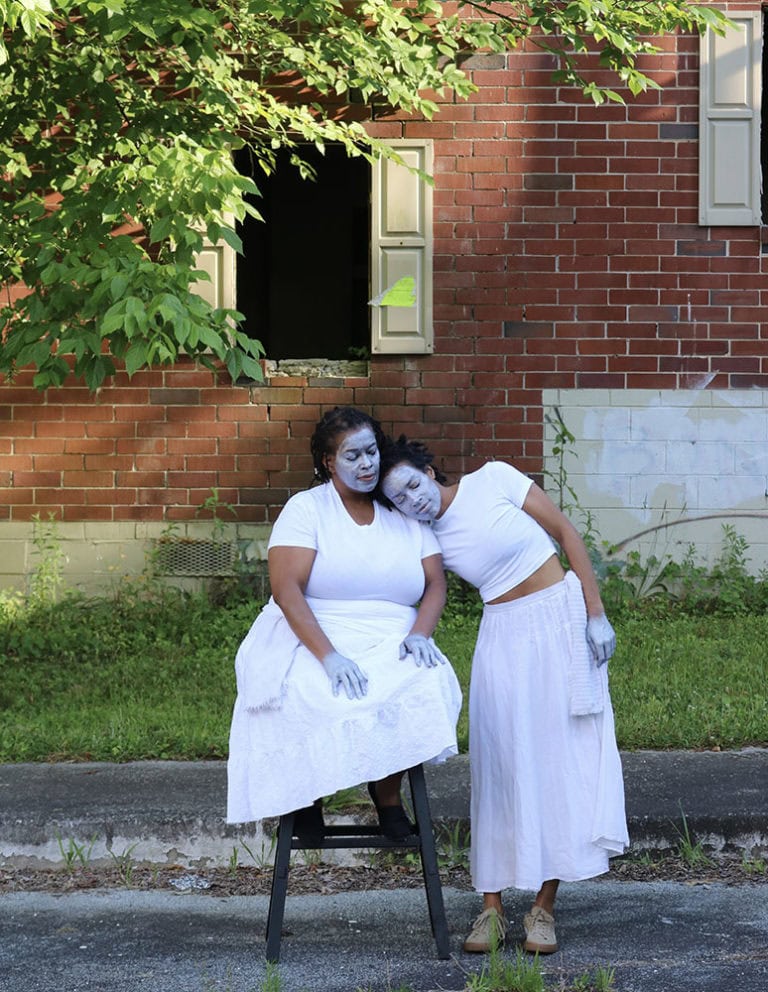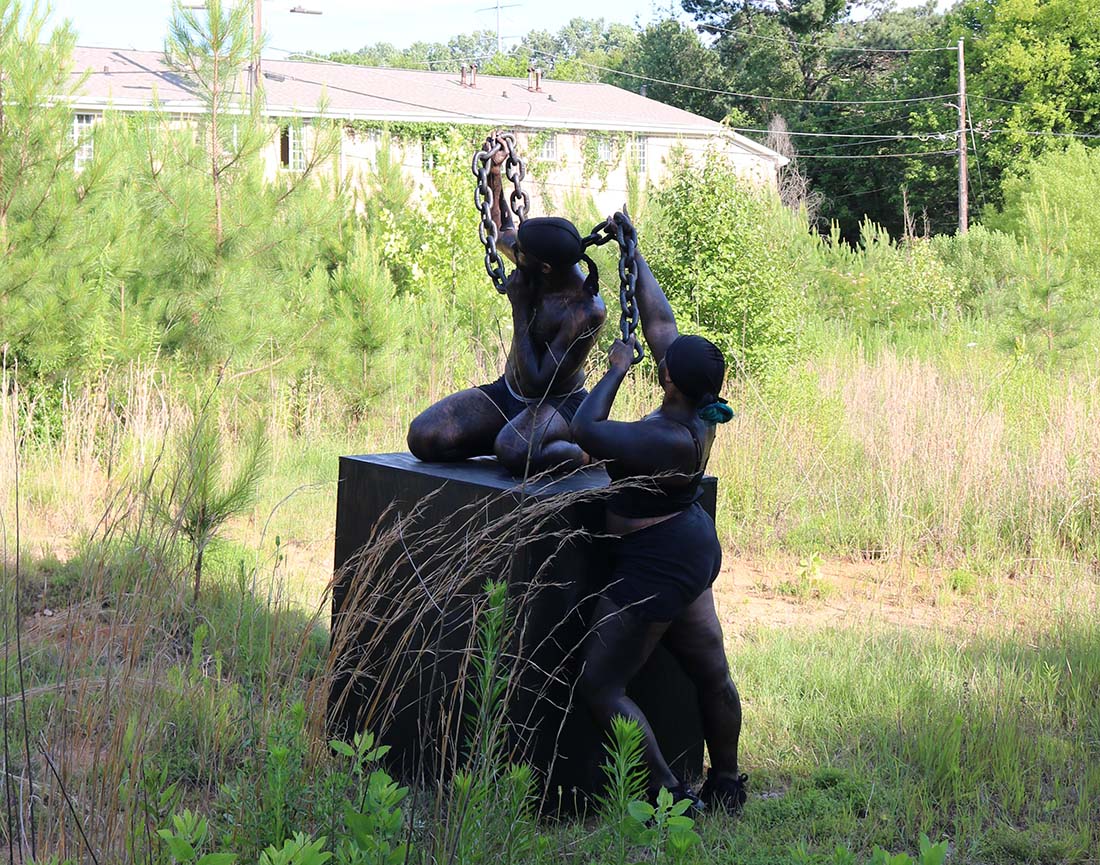
All images by Paige Mitchell, courtesy of the artist.
Upon finishing her MFA at the School of the Art Institute of Chicago last year, Nneka Kai returned to her native Atlanta and moved into her mother’s house, where she has been making new work in the garage-turned-studio. Among her mother’s possessions, she found a copy of The Negro Motorist Green Book, which includes familiar Atlanta sites that have historically offered safety and comfort to Black travelers. Her current project, a performance series called Odes, is inspired by this discovery and seeks to enliven the “potent Black spaces” in her own life.
Our conversations took place in August and early September over video chat and email and have been edited for publication.
Susan Mackey: In writing that you posted on your Instagram, you refer to the Odes performances as “monuments.” You say, “In a black femme imaginary our monuments would be temporary, alive, fluid, black, female. They would respect the land, the body, history.” Can you tell me more about how these performances are functioning as new monuments?
Nneka Kai: There has been a lot of work surrounding the removal of confederate monuments for a couple of years now, and to finally see them falling is remarkable, but also I think of what will be erected in their place. How would I create a monument that does not seek to function in the same context as these historical marble markers, but that which seeks an alternative? The Odes work to redefine monuments as temporary objects that celebrate a space in time and a people—but which do not seek to dominate or lay claim to space. The random occurrence of the performances centers them in the everyday, in the community, in a for us, by us spirit.

SM: You’re a fiber artist at heart, and we’ve talked before about how craft is so critical to your practice. How did you satisfy your need for crafting objects for these performances?
NK: Performance and objects go hand to hand; they are synonymous in understanding of myself and my artistic practice. Throughout my life, I have always attached stories and experiences to certain objects. I believe objects reveal much more than we tend to think. We often barely scrape the surface of fully understanding an object in a Black cultural context. Through teasing out the meaning of craft and objects through performance we expand and give way for multiple narrations of making, use, and space.
SM: Can you tell me about this fantastical chain-broom that you constructed for Ode III?
NK: The chain manifested from thinking about sound and how sound is so visceral. What is felt in the body when sweeping the chain-broom? To take such a highly loaded object and transform it into an object of care—I thought it was both funny and beautiful.

SM: I see some similarities between Ode III: Listen for the Clearing and William Pope.L’s 1991 Tompkins Square Crawl. Both demonstrate gestures of care—Pope.L was transporting a potted flower to safety, you and your co-performers were making Auburn Avenue “ready for cultivation”—but I’m also struck by the similarity in your wool suit wardrobes and that both performances were staged in the heat of July.
NK: I could see the comparison: the public performance, public space, engaging with the community, and the requirement of both physical and emotional endurance. I can see many similarities—but my performances also often take on multiple iterations. I guess they satiate my need for the theater.
SM: Pope.L said, “As soon as you go outside there’s this issue of where are you in space, and who owns that space. So I realized that I was setting up a tension when I crawled about being in space, and how you’re located in that space, and how you’re supposed to behave in that space, and who can own that space.” I feel this sense of tension in the final Ode. The movements are really deliberate and painstaking, forcing the viewer to slow down while waiting this final moment of arrival.
NK: Tension is always a great element to engage with during a performance, especially with the broader emotional state of our country. But I don’t think of slowing down in this performance as building tension. I think of it more as a form of taking time. The importance of slowing down, to really focus on what is around you and your surroundings. We can think of this in relation to the current pandemic, in that time seems to havestood still, forcing you to focus on home, on site, and your place in it. There is always tension in introspection. And I don’t know if there is ever a moment of arrival or departure—I feel that each ode leads to the next. Each has to end due to the nature of the performance, but I feel the energy and the site carries it on.
Ode I: In the Thick of It was performed at 202 Alison Court in Atlanta on June 11, 2020.
Ode II: The Rocks They Threw was performed on Verbena Street in the Dixie Hills neighborhood on June 18, 2020.
Ode III: Listen for the Clearing was performed on Auburn Avenue on July 2, 2020.
Kai is currently seeking funding for the next performance in the Odes series, to be staged at Centennial Park.




